Wren, Dunnock and even a pair of Barn Swallow breed on the island in small numbers, Feral Pigeon looking something like a Rock Dove are fairly plentiful and are probably an attraction for the occasional visit by a Peregrine which used to breed on the island but doesn't appear to do so now.
Starlings are reasonably abundant too but I think they are non breeding ones.
There are several pairs of Rock Pipit.
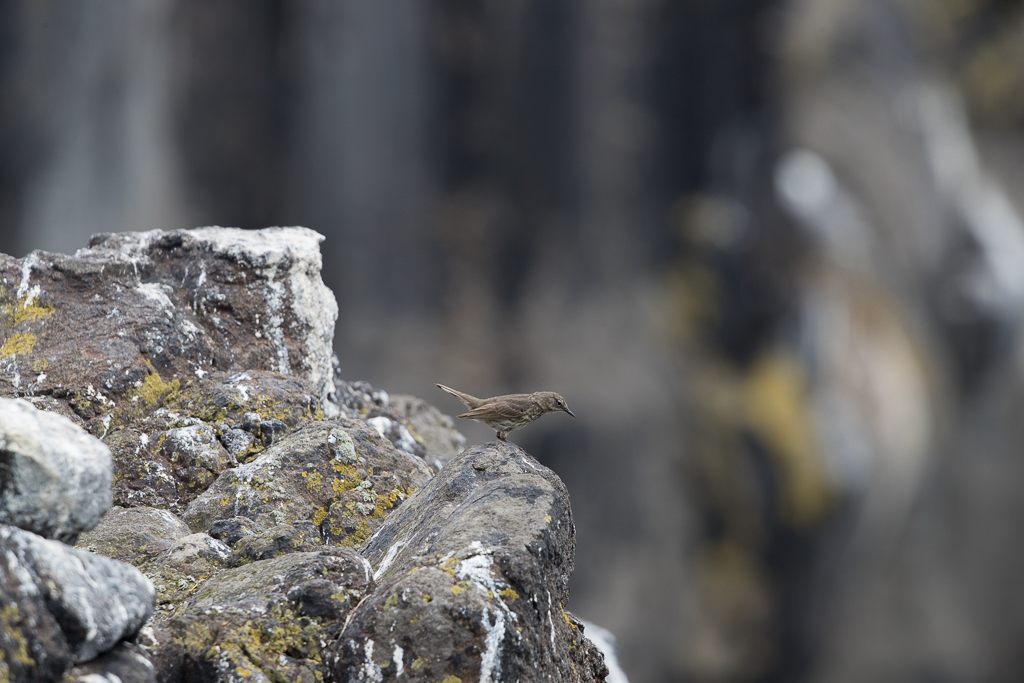
They look so insignificant when you see them hunting around the cliff tops, every other bird, even the Puffin, is huge by comparison.

You need to stick a long lens on for a change, that shot taken with a 2.0x converter on a 500mm lens.
Where you find the Rock Pipit you often find the Pied Wagtails too.
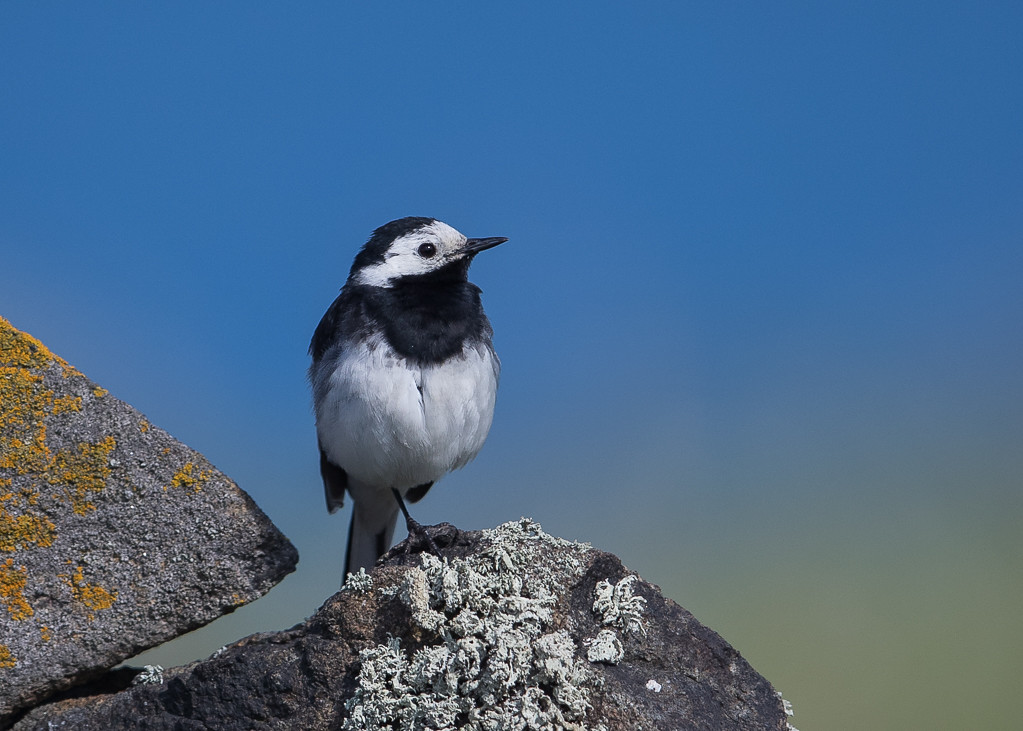
Sometimes on the rocks but more often on the grassy areas.
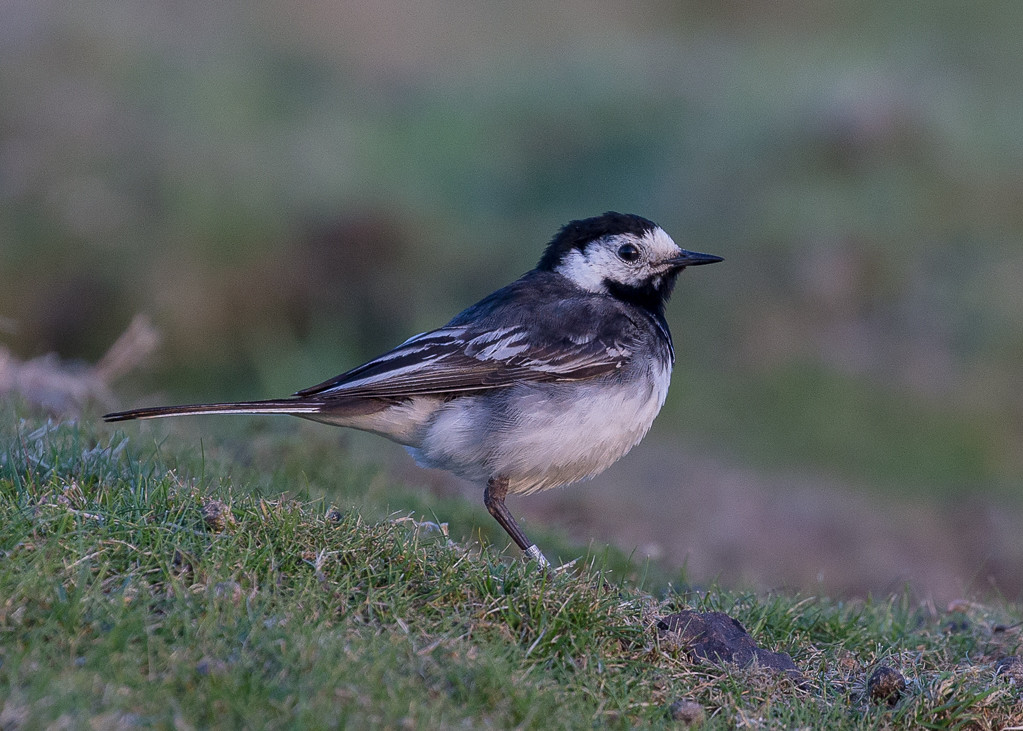
hunting the same insect prey as the Pipits.
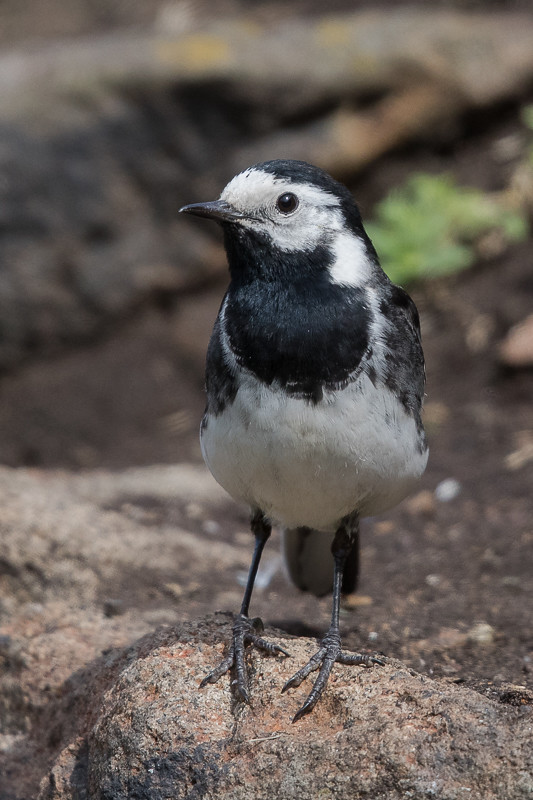
Another breeding bird in smaller numbers is the Oystercatcher.
A pair must have been nesting close to a main path as they were always trying to distract you as you walked past.
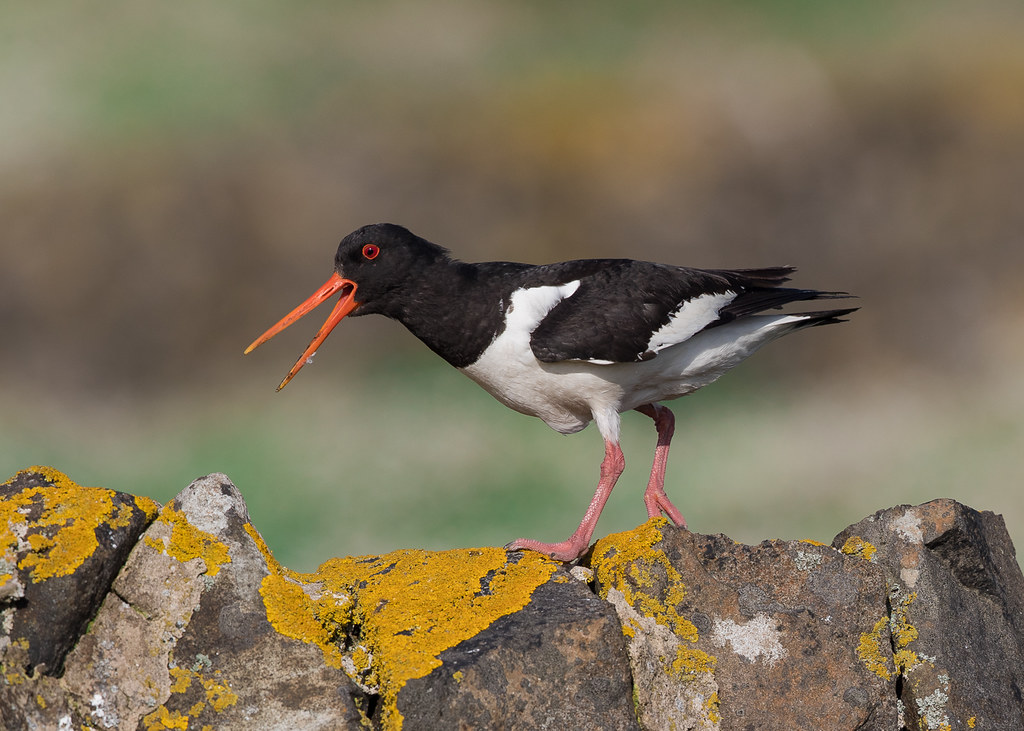
Very vocal indeed
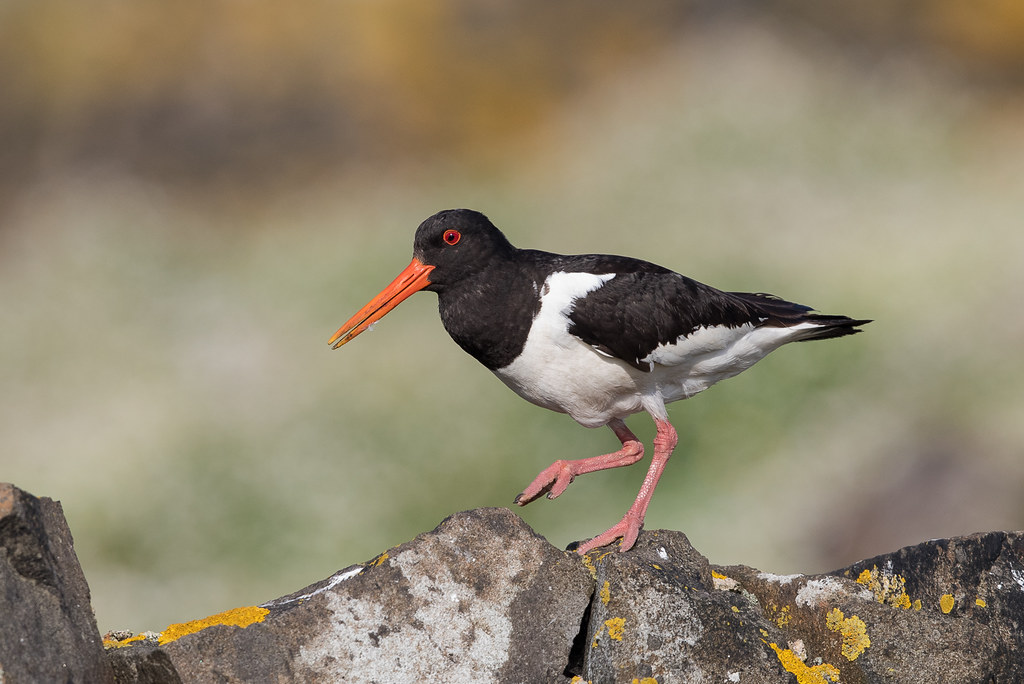
They would walk up and down the wall
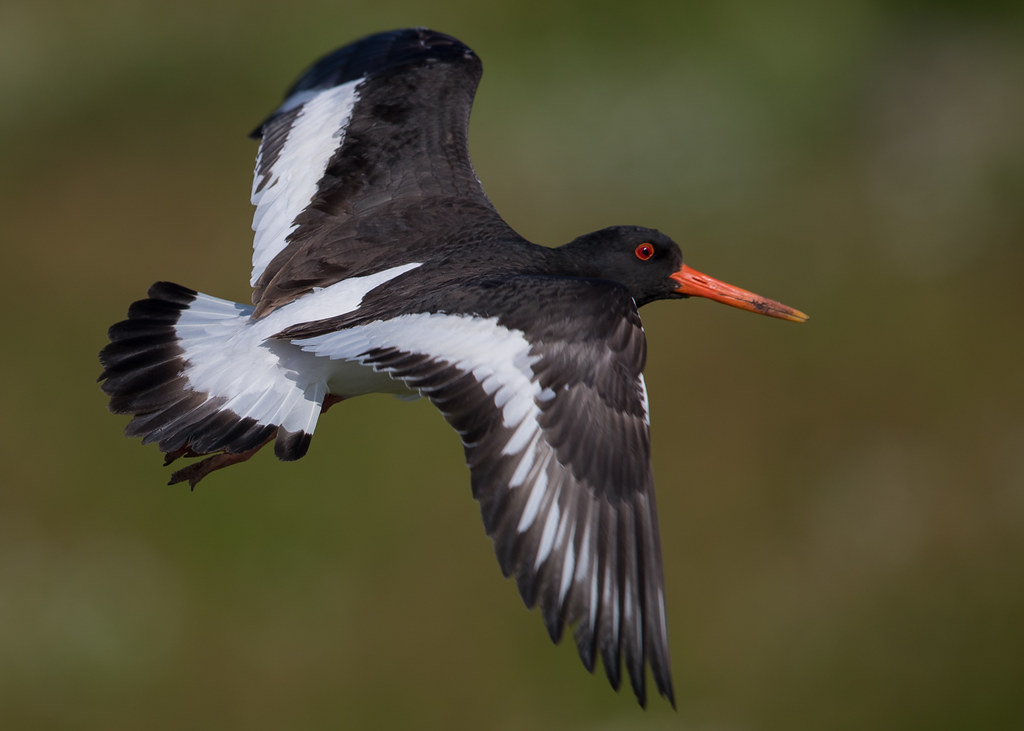
before flying off and giving more warning cries as they went.
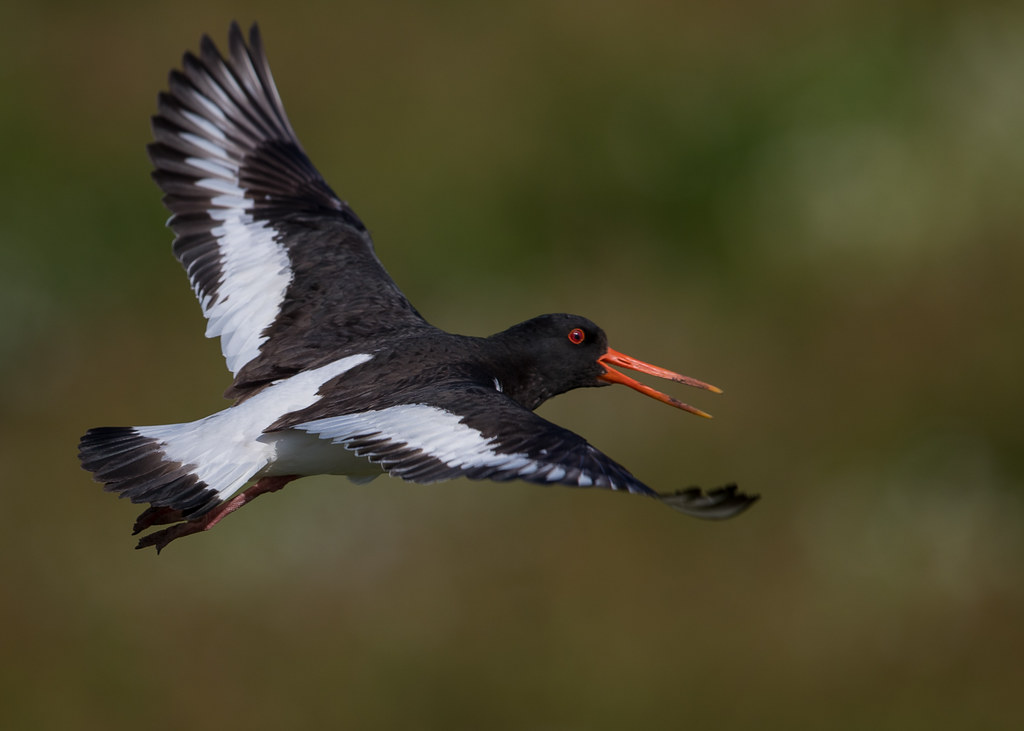
One of a pair have been known to feign injury to try and attract the attention of a predator and distract them from finding their nest. When the predator comes in to attack, the Oystercatcher flies off taking the predator away as they do so.
The other breeding bird that hasn't been mentioned as yet is the Eider Duck. If you arrive in spring time the mating calls of the males ring around the island constantly. Once they have won over their mate they disappear off and leave the Mrs to do all the hard work. I have no respect for the male Eiders whatsoever!
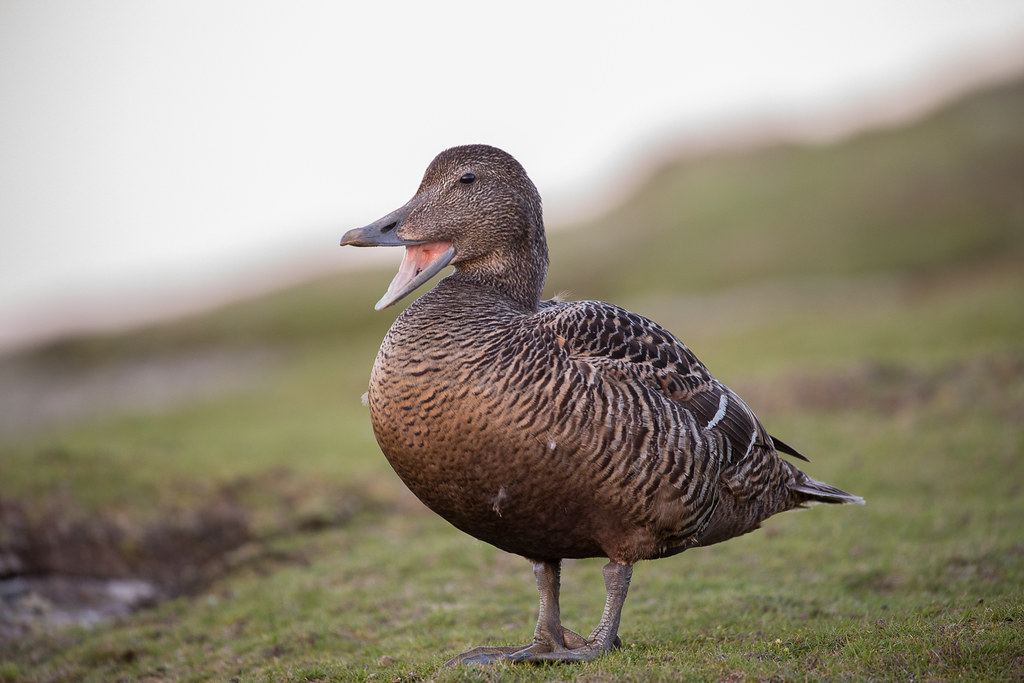
The females are somewhat dull in appearance though.A bit more interesting with a quick flutter of the wings.
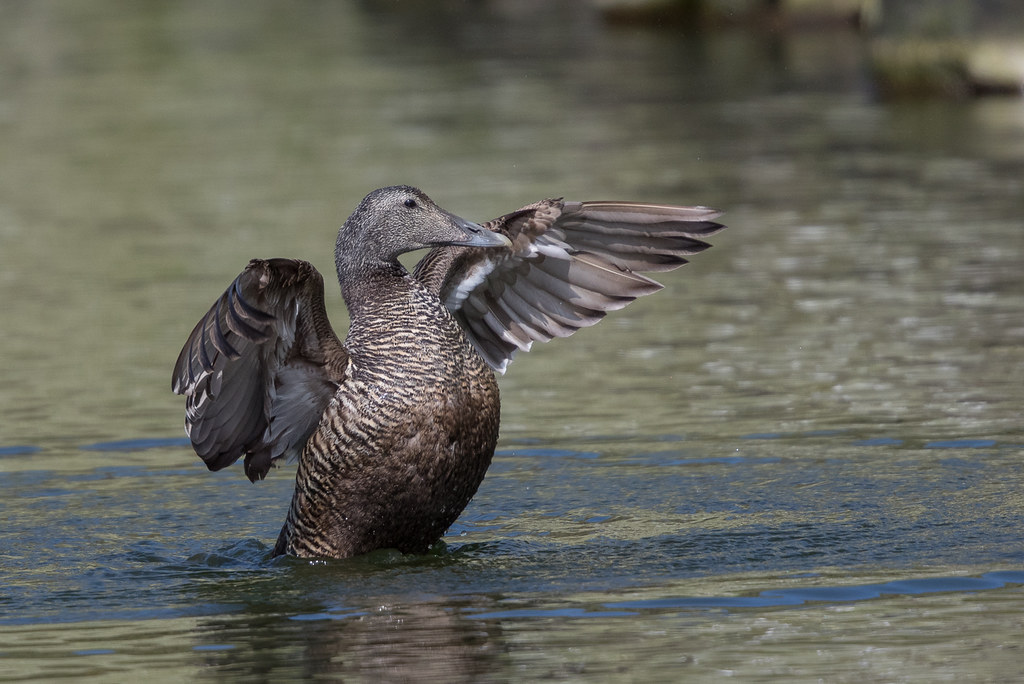
but nevertheless. Dull!
Well not if they have a few ducklings own tow!
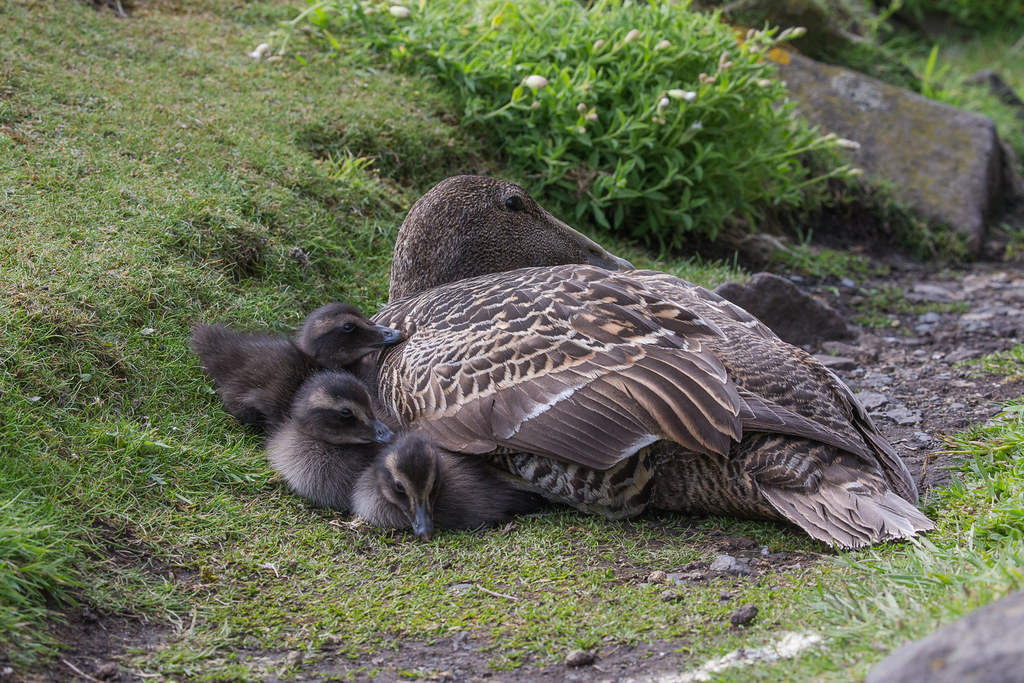
This particular female had made her nest right up against the Low Light wall and I didn't even notice her at first... that's why they are dull!
Unlike the seabirds on the cliffs who simply lay an egg directly on to the rocky ledge, the Eider's nest is pure luxury.Lined with their famous down, it's the perfect bedding. Once the eggs hatch though, the whole family is up and away.
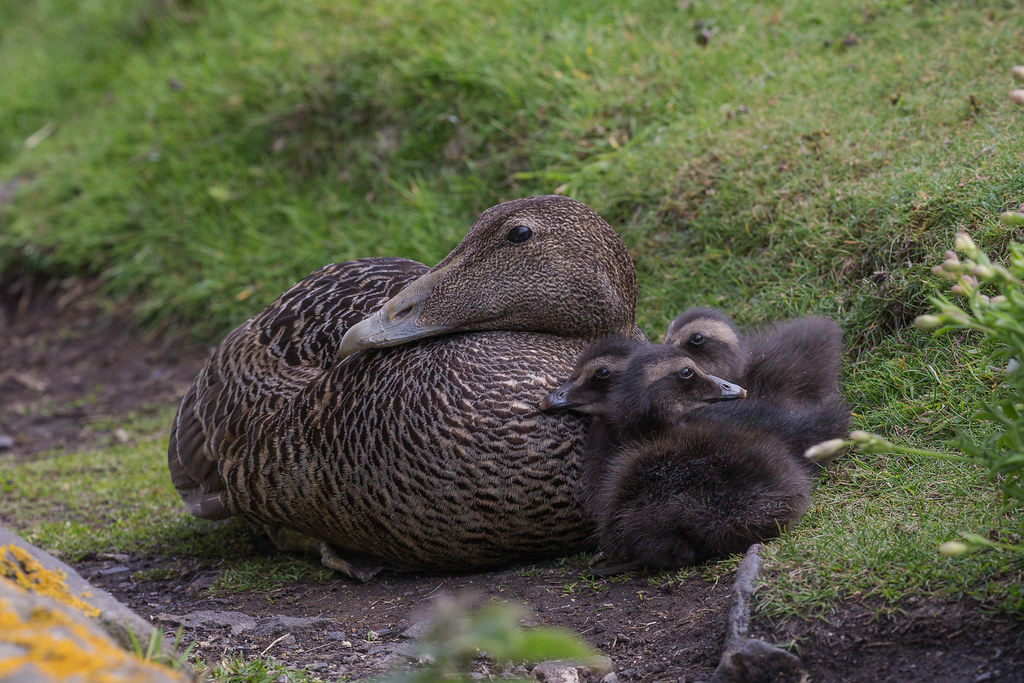
Theses Ducklings are literally a day old but soon they take the long walk up the hill to join the other females and their young in what appears to be a creche. Used to us being around she posed for the shots before deciding the babies were ready for their trek.
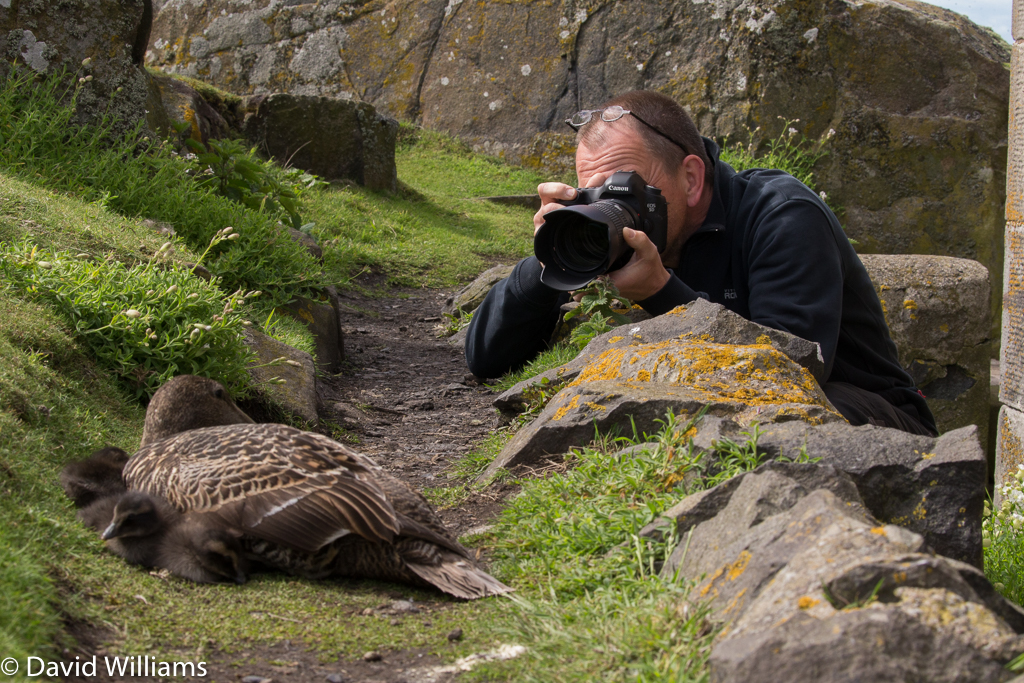
I would imagine they are very vulnerable at this stage of their lives but I didn't actually witness any casualties.
And there are those that would take advantage.
T.B.C.
No comments:
Post a Comment